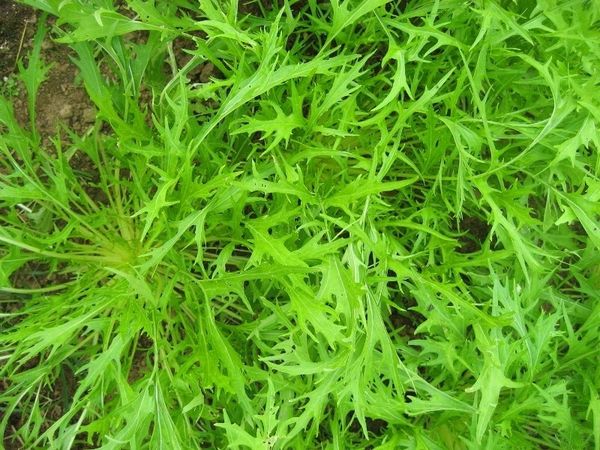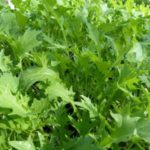In Japan and China, this variety of cabbage is known for a long time. It is used for the preparation of complex dishes such as stews, dishes of national cuisine, and of course in fresh form. In Russia, Japanese cabbage was loved for its delicate taste, delicate aroma and simplicity in agricultural technology. Gardeners and farms take several harvests of this vitamin-rich fiber and cabbage.
Table of contents
Description and characteristics
The closest relatives of this plant are Peking cabbage, they have a similar taste and composition. In America and Australia, it is called Japanese mustard, or lettuce.
Gentle - green sprouts, graceful and fragrant, collected in the outlet, quickly grow after cutting. Gentle mustard flavor is misleading, and many take cabbage for mustard.
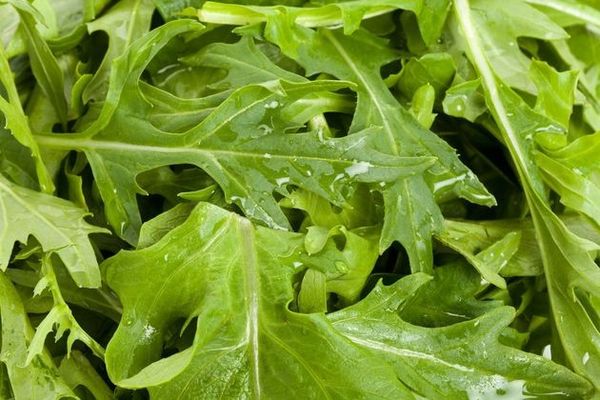
Amateur breeders began to import seeds to Russia, and in the last 10 years it has been firmly included in the list of vegetables of many gardeners.
Beneficial features
Japanese cabbage is one of those varieties whose effect on the body is undoubtedly positive. It contains significant amount of vitamins Groups B, PP, C, as well as magnesium, potassium, phosphorus.
People who follow their diet, food quality, follow a diet, have long made a choice in favor of this delicate vegetable. The compounds of microelements contained in it easily fight against avitaminosis, it is indicated for diseases of the stomach and digestive tract, for the prevention of oncology.
Unlike ordinary cabbage, she easy for digestion, improves intestinal motility, normalizes stools.
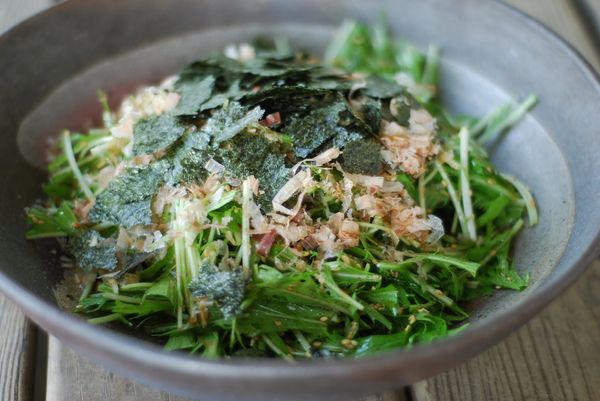
In combination with hot peppers and olive oil, it is believed that cabbage helps get rid of obesity. Adding it to salads, makes them light and nutritious, but at the same time, quite nourishing, and this is very important in the fight against obesity.
The best varieties of Japanese cabbage for growing from seed
In Russia, several varieties are in demand, some have already been zoned, and are listed in the register of breeding achievements. Each of them is good in its own way, and is distinguished not only by its appearance, but also by its taste components.
Mizuna Green and Mizuna Red
Two beautiful varieties of Mizuna, and first of all, they are distinguished by the subtlety and tenderness of carved leaves.
Green - a plant with emerald bright and juicy greens, Red - green, with a reddish bloom. Both varieties are rich in ascorbic acid and fiber, but the most thermophilic of all known. From planting to technical ripeness you need to wait 1.5 - 2 months.
- Mizuna green
- Mizuna red
Mermaid
Sort Little Mermaid has already established itself as enough cold resistant. There is access in almost every store for the garden.
Mid-season - from planting to ripeness 55-60 days. You can not cut the cabbage bundle, and one stalk. This allows you to start using it for the table earlier.
In the socket to 60 leaves up to 40 cm high. Productivity up to 6 kg from 1 sq.m. Not prone to color if during the formation of leaves to avoid overheating of the soil. With this variety, perhaps, there will be the least trouble. After cutting the sprouts grow after 8 - 15 days, and their quality remains excellent.
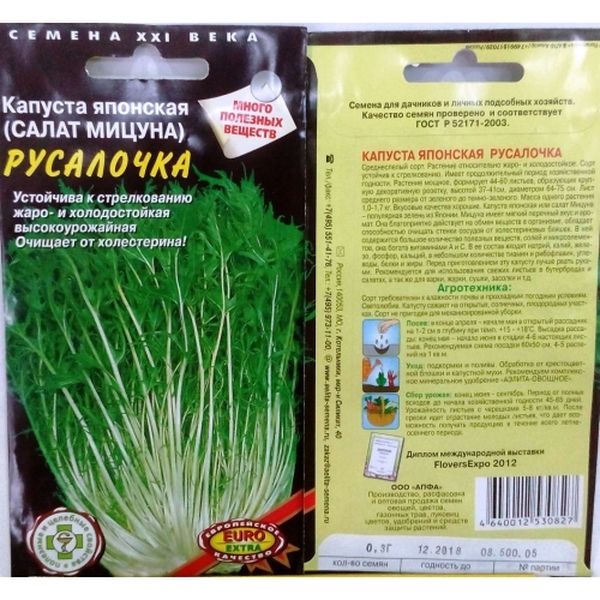
Dude
Another famous variety, conquered gardeners. Thanks ultra fast ripening, the rapid regrowth of cut stalks, has become one of the permanent vegetables on the table.
Matures 30 days after landing, the cut grows in 10 - 12 days in full. During the summer you can take 5 - 6 harvests.
The weight of one plant reaches 500g., And from 1 sq.m. possible to remove at a time up to 6 kg.
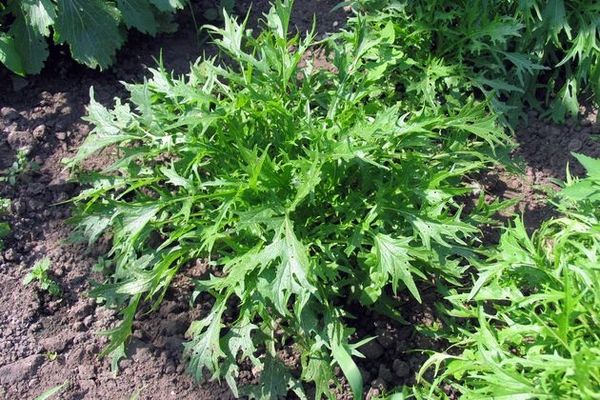
Site preparation for sowing
Unlike the usual white cabbage, Japanese cabbage:
- Photophilous. The more sunlight, the faster and better the leaves will develop;
- Does not tolerate transplantstherefore, it is sown in seeds immediately to the ground at a permanent place;
- Selective to the soil, but one should not get involved in organic matter, because it accumulates nitrates quite easily;
- Does not tolerate overflow as opposed to white cabbage, but overheating can cause color to color;
- Sprouts are cold resistant, and you can not be afraid for the early shoots - they easily tolerate temperatures up to minus 4.
If the soil is excessively loamy, you can add sand and compost, some black soil, or soddy soil. In the middle - end of April You can cook a bed, dig, spill water, and cover with a film to warm the earth.
Landing technology
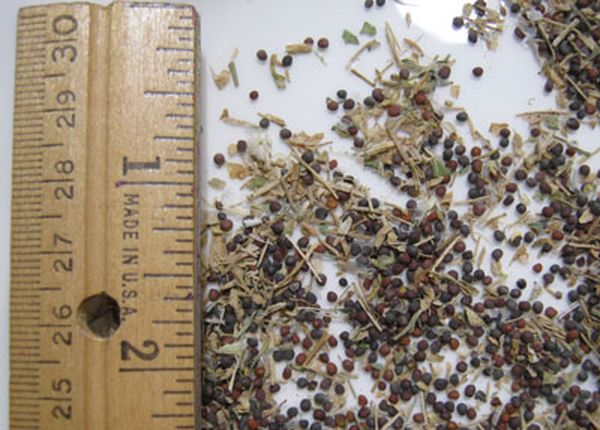
The distance between the rows should be left. not less than 30 cm. Distance between seeds 15 - 20 cmif crops are frequent, they will have to be thinned out, otherwise they will interfere with each other.
Try to immediately seed the seeds as far as possible from each other, because when you are growing, it is easy to touch the neighboring very tender shoots.
- Shallow grooves, no more than 0.5 cm, spill with warm water, once again squeeze the ground into them, spread the seeds and lightly sprinkle with earth.
- Cover with foil or nonwoven fabric. The second option is more desirable here, and it is better to use both shelters.
- Remove the film only after germination, and leave the covering material.
Care rules
Seed planting to produce in early spring, this will minimize the level of tsvetushnosti. It is better to catch light frosts in the first two weeks than to overheat the shoots.
The ideal temperature for this plant is considered 15 - 20 degrees above zero. After emergence of shoots, watering should be carried out very carefully, with cool water, and only after the soil dries out.
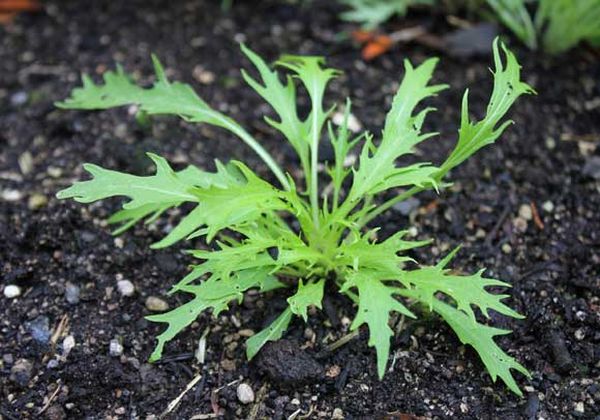
As soon as the plants begin to pull up, it is necessary to pour the earth between the rows. Top dressing is carried out only after the first cut. For this purpose, ready biohumus dissolved in water is suitable. Do not be afraid of rainy cool weather and cover the cabbage - it will survive very well.
Harvesting
The first collection, depending on the grade you get after 30 - 60 days, and the following is no later than after 15 days. Cut off the entire above-ground part so that white stems remain visible. The root must be left whole.
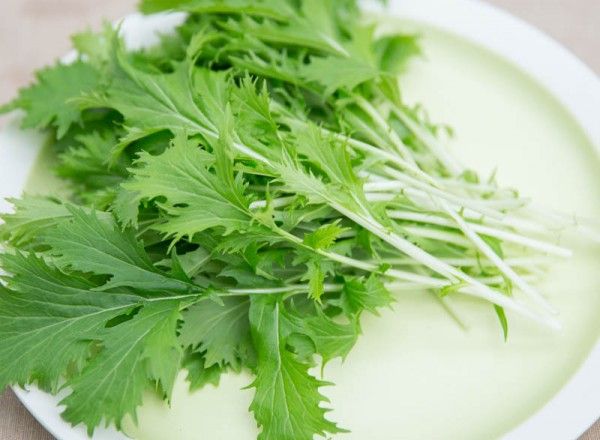
After cutting, spill with biohumus, or herbal extract, diluted in water, and wait for a new batch of beautiful and healthy herbs.
This vegetable is beautiful with many characteristics, but first of all - for its taste and aesthetic qualities. You can use it in the garden not only as a vegetable, it is decorative, and will become an edible decoration. With Japanese cabbage fresh and healthy greens on your table throughout the summer is provided.
